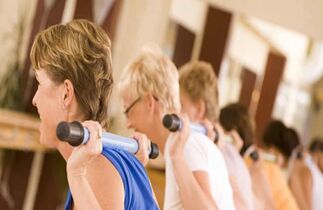中年阶段健身与少年阶段健身一样受益
|
Getting active in midlife could be as good for you as starting young when it comes to reducing the risk of an early death, researchers have suggested. But experts say the study, which looked at people's patterns of exercise as they aged and their subsequent death records, also shows the benefits fade once exercise declines. "If you maintain an active lifestyle or participate in some sort of exercise over this window of time [from youth to middle age], you can reduce your risk for dying," said Dr Pedro Saint-Maurice, the lead author of the research, from the National Cancer Institute in the US.
"If you are not active and you get to your 40s-50s and you decide to become active, you can still enjoy a lot of those benefits." The study, published in the journal Jama Network Open, was based on data from more than 300,000 Americans aged 50-71 who undertook a questionnaire in the mid-1990s. They were asked to estimate the extent of their moderate to vigorous leisure exercise at different stages of their life. Researchers then used national records to track who died in the years up to the end of 2011. After taking into account factors including age, sex, smoking and diet, the team found that those who were exercising into middle age had a lower risk of death from any cause in the years that followed than those who had never carried out any leisure exercise. However, when the team looked at 10 different patterns in the way people were active over their life, it found a surprise. Men and women who ramped up their activity gradually to about seven hours a week by the age of 40-61 reduced their risk of death from any cause in the years that followed by about 35%. The benefit was similar to that seen for people who reached and maintained similar activity from their teens or 20s onwards, or who exercised at such a level when young and middle-aged but dipped in activity in their 30s. |









